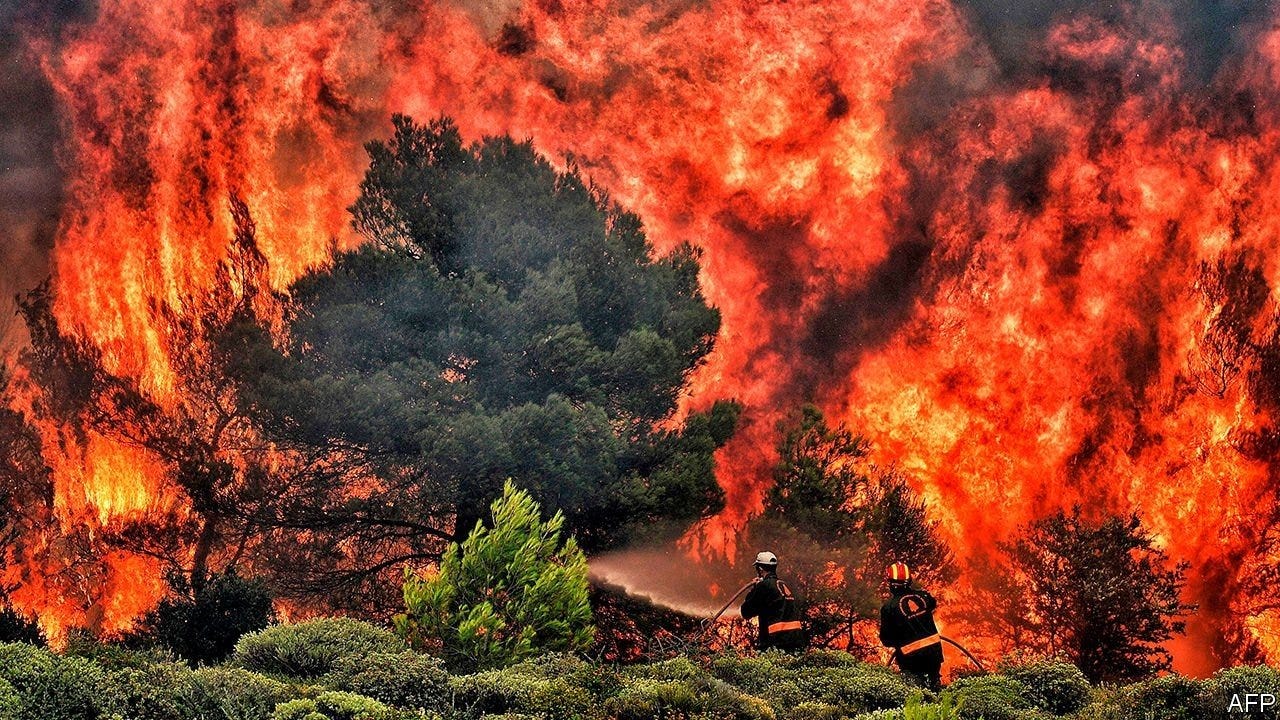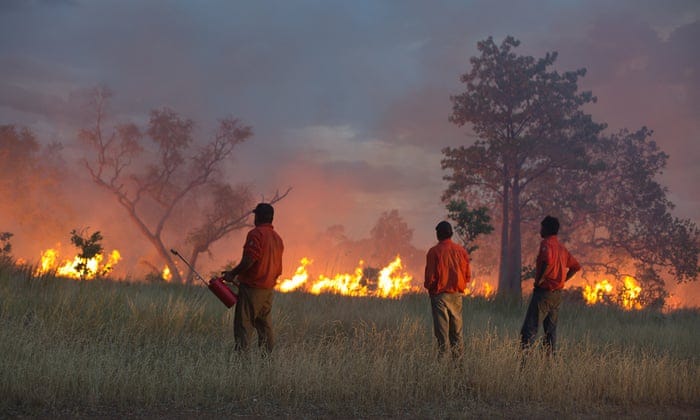🔥 Controlled burns: fighting fire with fire
Welcome back to The Regeneration Weekly, a newsletter delivering regenerative food and agriculture news to your inbox every Friday. Not a subscriber yet?
Policy: Wildfires are not a new occurrence but in many regions of the country, they have grown larger, more frequent, longer-lasting, and more destructive. Over the last decade, the US has experienced an average of 62,692 wildfires across 7.5 million acres annually. And in 2020, over 58,250 wildfires burned across 10.3 million acres; nearly 40 percent of these acres were in California. Unsurprisingly, last year’s blazes in the Western US cost insurers somewhere between $7 billion to $13 billion. The science is clear. Climate change compounds the factors that create perfect fire conditions. Sustained drought and warmer air temperatures dry forests and vegetation. And when you add strong winds and misguided fire suppression policies that have enabled nearly a century of flammable fuel (wood and other plant material) to build up, you have a recipe for catastrophic wildfire.
Reducing greenhouse gas emissions is commonly discussed as a means of curbing wildfires. In recent years, policymakers have also woken up to the need to reevaluate our federal fuel treatment protocols, which remove too few of the accumulated fuels from forests and rangelands. In California alone, nearly twenty million acres of forests could benefit from fuel treatments like prescribed burns, otherwise known as “controlled burns.” This technique applies low-intensity fires in a knowledgeable manner to wildland fuels. By working in partnership with fire, instead of suppressing it, we have an opportunity to restore dry landscapes and enhance natural habitats while reducing the risk of wildfires.
Fire is often thought of as an unhelpful and unmanageable disturbance, causing harm to ecosystems. Yet In the pre-1800s, early settlers found Native Americans leveraging controlled burns and quickly adopted the practice themselves to facilitate hunting, reduce the threat of wildfire, and increase land productivity. In 2015, a group of organizations including the Sierra Club, the US Forest Service, and several others signed a memorandum endorsing expanded use of controlled burns. Nowadays, low-intensity fires are applied to over 8 million acres in the southern US each year - more than in all other regions combined. And a new bill introduced by Oregon Sen. Ron Wyden seeks to provide federal agencies with $300 million annually for prescribed burns on federal, state, and private lands.
Contrary to many critics’ claims, research by scientists from the US Forest Service Pacific Southwest Research Station have shown that prescribed burning has little or no effect on a forest’s vegetation, soils, wildlife, and carbon sequestration (trees’ ability to capture CO2). Moreover, results from a 2021 nutrient analysis by Chico State indicate that there is no discernible change in the water-soluble nitrate held within the soil before and after a low-intensity burn. Thus, prescribed fires retain more nutrients in the local ecosystem than wildfires, which results in a 5-50% loss of nitrate in the soil. And after measuring CO2 fluctuations pre-and post-fire on burned sites across the Rolling Plains of Texas, Oklahoma State Professor Jim Ansley found that the carbon lost to low-intensity fires was recovered in approximately 28 days.
Choosing the proper size and frequency of fires is crucial to a successful burn. The time interval between purposefully ignited burns varies from as little as one year up to a four-year cycle depending on factors, including the rate of fuel accumulation and past wildfire occurrence. Because prescribed fire is implemented in harmony with nature, it is often less expensive and generates fewer negative effects than alternative methods such as mechanical clearing (using equipment to remove smaller trees) and chemical treatments. In addition to the cost savings, prescribed burns provide a range of environmental benefits, which include:
Reducing hazardous fuels: The judicious use of prescribed fire is an effective method for widening firelines and preemptively consuming flammable undergrowth. After several years of fire exclusion, an ecosystem that needs periodic fire becomes unhealthy. Trees grow stressed by overcrowding, fire-dependent species vanish, and flammable fuels build up on the forest plains. This accumulation of combustible materials becomes hazardous, posing a serious threat from wildfire to all forest resources.
Regulating ecosystems: A medley of plant species is awakened following prescribed fire. The new vegetation, which is high in nutrients, creates heterogeneous landscapes that increase the availability and quality of grasses for grazing. Moreover, a combination of burnt and unburnt areas maximizes the "edge effect,” which attracts new species to the habitats and food sources now provided on post-burned land.
Regenerating land: Prescribed fire treatments are useful when regenerating southern pine and other species that have been stored in seed banks located beneath the surface of the soil. Fire can expose mineral soil and manage competing plants until seedlings become established. In fact, many native grassland species are fire-tolerant or dependent and rely on the heat or smoke produced by fire to germinate.
Controlling insects and diseases: Prescribed burning is adept at mitigating the proliferation of invasive species like the bark beetle. It also seems to be a practical method of disease control. Brown spot, for example, is a fungal infection that weakens and kills longleaf pine seedlings. Controlled fires not only eliminate the diseased needles but also leave behind the terminal bud.
In short, fire is neither naturally destructive nor constructive - it simply stimulates change. And in the eyes of Sasha Berleman, a fire ecologist with the Audubon Canyon Ranch, “fire can’t be prevented, it can only be postponed.” Therefore, we must recognize that the planet will continue to warm, and areas susceptible to wildfire will more than double. While prescribed fire is not a cure-all, policymakers and land managers must learn to manipulate fire timing and intensity to catalyze changes that improve ecosystem health and resiliency.
Watch: Wilder than Wild reveals how decades of climate change and fire suppression have left our forests and grasslands susceptible to catastrophic wildfires. This one-hour film takes viewers on a journey from the Rim Fire of 2013 to the high-intensity wildfires of 2018. Along the way, we learn how controlled burns can reduce the risk of wildfire while meeting the stakeholders working alongside scientists and resource managers to build a protocol for restoring and maintaining the lands we depend on. You can rent the film here. For additional information on prescribed fires, please check Wilder than Wild’s resources page.
Shop: ORIGIN has developed a Regenerative Organic Certified, A2 Heritage brand for the next generation. Heritage A2 cows produce milk that is nutritionally superior to all other breeds while consuming 20-30% less water and grass than their modified Holstein counterparts which account for more than 95% of all dairy produced in America. With the help of Mad Agriculture and the Rodale Institute, ORIGIN is leading a new paradigm in dairy that starts with regenerative farming and ends with superior-quality nutrition. Their network of family farmers is on the frontlines of human and ecosystem health. Click the link to find a store that carries their full line of clean-dairy products near you. And for a limited time only, our readers can use the code “regen” at checkout to receive 25% off your next online purchase.
The Regeneration is brought to you by Wholesome Meats | Soilworks | PastureMap.







